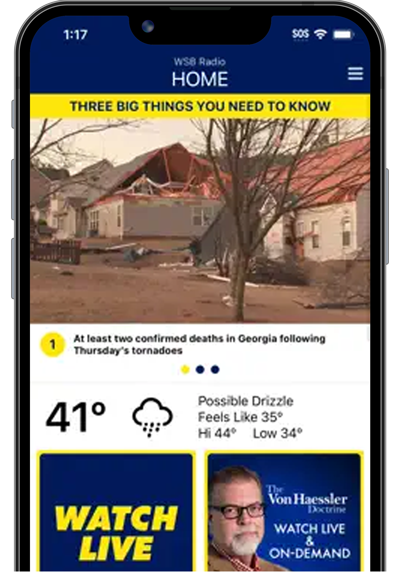Hurricane Helene left quite the path of destruction when it blew up into the Florida panhandle, then through south Georgia and as far north as western Carolina in a matter of hours last week. First off, here are ways to help those in need. Click here.
I was honored to host 6 hours on 95.5 WSB Radio that following Saturday morning, securing industry professionals and Georgia officials for the show. They all offered insightful advice, whether sought after right now or in preparation for the next weather event. Listen to those hours of Green and Growing here.
The Georgia Urban Ag Council is a professional association that prides itself in keeping landscape pros informed and educated at weather-stressed times like this- through hurricanes, heat advisories, subfreezing temperatures and more.
Mary Kay Woodworth, the Executive Director of UAC, says that after a soaking like this, many homeowners are quickly discovering issues with drainage. Woodworth suggests some ways to mitigate problems. “If water isn’t able to drain away from your home quickly enough, there are solutions such as French drains, dry creek beds, adding soil, and grading- always away from your house.”
Automation can sometimes get the better of us and doesn’t reset given the sudden surge of rain. Mary Kay reminds homeowners, “turn off your irrigation system and power your auto mowers off so they don’t tear up the yard anymore than it’s already torn up.”
Clint Waltz, Turfgrass Specialist at the University of Georgia, and Mary Kay Woodworth both encourage staying off the lawn and out of garden beds. Since the soil becomes so saturated after storms like this, human traffic and equipment will tear up the grass, as well as potentially compact the soil, which is bad for any root system.
In addition, Waltz offers something else to avoid this time of year, as well as one thing that is beneficial to do for lawns now. He says, “Don’t fertilize warm-season grasses right now. But DO consider a fungicide application. We just had a lot of rain, so let the grass dry out a couple of days, then make the applications.” Lawn fungicides will help prevent spring dead spot, and foliar diseases like large patch in warm-season grasses and brown patch in fescue.
Aside from flooding, trees are one of the biggest threats to homes during or after a storm. Here are some safety tips:
- If your home or property is damaged, call the insurance company first, and take pictures. Insurance will often then direct you to a tree company first to remove trees/limbs and tarp roofs. All debris should be removed before a roofing company can come out and be able to properly assess the damage.
- Leave tree removal (whether they’re still standing or not) to the professionals. Downed trees can be tangled in wires, and that may be hard to spot initially.
- In the hours after a storm, survey damage outside with caution. Weakened or dead tree limbs could still fall, root systems could be compromised, and saturated soil could settle, leaving sinkholes.
- Be wary of contractors coming door to door after a storm and pressuring you to make a quick decision. Also be cautious of ones showing up from out of state.
©2024 Cox Media Group

:quality(70)/cloudfront-us-east-1.images.arcpublishing.com/cmg/PJMOK2BIVVH3HJBWZFWFN4WDQM.jpg)
:quality(70)/cloudfront-us-east-1.images.arcpublishing.com/cmg/OBPUJMBAPBFRDF26ADMC6QN2I4.jpg)
:quality(70)/cloudfront-us-east-1.images.arcpublishing.com/cmg/IEXXAQEGPBHPZGCVAUFYAAUTF4.jpg)
:quality(70)/cloudfront-us-east-1.images.arcpublishing.com/cmg/SXTMB3AWNRGPHCU234ZZEYLP44.jpg)



